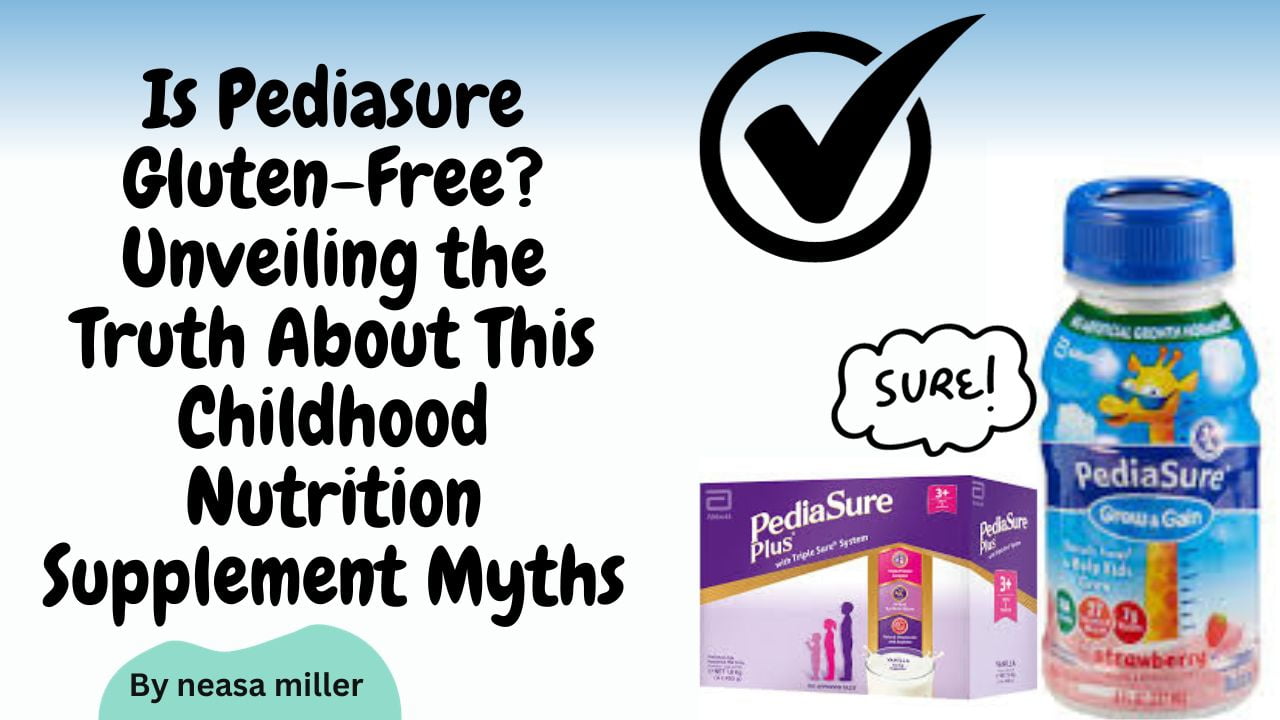Is Wasabi Peas gluten-free? is a question that arises for those with dietary restrictions or gluten sensitivity in the ever-expanding snacking scene. Snacking fans are becoming more and more accustomed to these fiery green morsels, which are prized for their powerful heat and delicious crunch. But as nutritional needs become more widely recognized, solving the puzzles around the components and manufacturing techniques of these flavorful tiny treats is critical.
This investigation will break down the ingredients of Wasabi Peas, look into any possible gluten content, and give you a clear picture of whether or not these hot snacks fit into a gluten-free diet. Join us as we unravel the mystery around this well-loved snack if you’ve ever wondered if Wasabi Peas are compatible with your diet.
Are Wasabi Peas Free of Gluten?
Wasabi peas are becoming a common snack food, available in grocery stores and bars alike. They are enticing pop-in-your-mouth sweets because of their crunchy texture and spicy bite. For those who are avoiding gluten, are wasabi peas safe? Let’s examine these green legumes’ specific role in a gluten-free diet in more depth.
What Are Wasabi Peas?
Wasabi peas are first made from ordinary dried green peas. They are tossed in a blend of spices and tastes for flavor and heat to transform them into wasabi peas. Wasabi, a spicy and savory Japanese horseradish frequently served with sushi, is the dish’s defining element. The peas are usually toasted and seasoned with sea salt, rice flour, soy sauce, and sesame in addition to wasabi. To get that crispy, roasted texture, they are then baked or fried.
Ingredients of Wasabi Peas
Wasabi peas’ main components are gluten-free. As legumes, peas themselves don’t contain gluten. Because it comes from a root vegetable akin to horseradish, traditional wasabi powder is likewise gluten-free. Furthermore, as rice flour is made of rice, it is gluten-free. Rice flour is a traditional coating for wasabi. But Wasabi peas with a lot of popularity actually include gluten because they are made with wheat flour. But don’t worry, if you want to enjoy this spicy and crispy snack without any guilt, there are gluten-free options available.
What about the other components that give flavor? Here, a little further investigation into labels and production procedures is needed:
- Soy sauce – Regular soy sauce contains gluten from wheat. Always check for gluten-free soy sauce.
- Sesame seeds – Sesame seeds themselves are gluten-free but processed on shared equipment. Look for dedicated facilities.
- Salt, sugar, corn starch – These are gluten-free.
- Natural flavors – Can potentially contain gluten. Opt for certified gluten-free.
- Dextrin – This thickener may be from wheat or corn. Ensure it is made from corn.
Wasabi peas can be made gluten-free by choosing products that use maize dextrin, sesame seeds, natural flavors, and soy sauce that doesn’t contain gluten. Still, it is important to look closely.
Certified Gluten-Free and Dedicated Facility Brands
Look for wasabi peas and snacks that have a gluten-free certification label from GFCO, GF Certification Program, or other certifying organizations to eliminate any uncertainty. This guarantees to third parties that all ingredients and procedures were audited to have less than 20 parts per million of gluten.
Alternately, go for brands produced in facilities specifically designed to handle gluten-free goods, where there is no chance of cross-contamination. These consist of:
- Popcorn Quinn
- Bubba’s Foods
- Cape Cod Provisions
- The Greater Knead Gluten-Free Bakery
Recognizing the Gluten-Free Features
Determining if a product is appropriate for those with dietary restrictions can be aided by knowing the characteristics of gluten-free ingredients. To help you enjoy and comprehend this topic, consider the following important points:
Ingredients free of gluten: Rye, barley, and wheat all contain the protein gluten. Alternative grains like rice, corn, or quinoa are used in gluten-free products.
The significance of being certified gluten-free Seek for goods bearing labels certifying them to be gluten free. These show that the product has been tested and that its gluten content satisfies stringent requirements.
Research on wasabi peas: Since wheat flour is used to make many well-known brands of wasabi peas, there are gluten-free options available. It’s important to look for products that are certified gluten free and to examine ingredient lists.
Risks of cross-contamination: During production procedures, cross-contamination can happen even in products that are designated as gluten-free. If you are extremely sensitive to gluten or have celiac disease, be wary of cross-contamination.
Gluten sensitivity vs. celiac disease: It’s critical to recognize the distinction between celiac disease and gluten sensitivity. While people without celiac disease can tolerate small amounts of gluten without experiencing negative effects, those with the disease must strictly avoid even trace amounts of the grain.
Remember that speaking with a certified dietitian or food science professional is strongly advised. They can offer you tailored guidance regarding your particular dietary needs. They are able to offer trustworthy information supported by data from science. This is particularly helpful when it comes to making well-informed decisions, like when it comes to eating gluten-free snacks like wasabi peas.
It is quite possible to maintain a gluten-free diet while enjoying wasabi pea snacks by carefully examining the components and production methods. Just go for products that are manufactured in facilities specifically designated for making gluten-free goods. Even those with celiac disease or gluten sensitivity can enjoy the spicy snap of wasabi peas without concern with a little label reading.



